Shagreen has been prized since the time of the pharaohs in Egypt and during the Chinese Han Dynasty (202 BC – AD 220).
In China, it was used in the construction of bows.
In Japan, shagreen has been well-documented and preserved since it began appearing on the sword hilts and armor of Japanese Samurai during the Middle Ages, dating back to at least the thirteenth century. This preservation is attributed to its textured surface, which provided a reliable grip. However, there is no evidence to suggest that shagreen was used in Asia during this time to decorate furniture for their domestic market.
The earliest known examples of furniture decorated with ray skin were actually produced in Japan but were intended for the European market. These items were initially brought to Europe by Portuguese traders in the late sixteenth century.
During this period, the Portuguese were importing substantial quantities of lacquerware from Japan to Europe. This early export lacquerware is commonly referred to as “namban,” a term that translates to “Southern barbarian” and was used by the Japanese to describe all foreigners except the Chinese and Koreans. The lacquer workshops tailored their production to meet the preferences of Western traders. Furnishings were crafted in shapes that would have been familiar to Europeans, and the lacquer decoration often exhibited inferior quality compared to objects made for Japanese consumers. Some of these items incorporated shagreen.
The Dutch, who replaced the Portuguese as the dominant European naval power trading with Japan in the early seventeenth century, also imported furniture decorated with shagreen and lacquer.
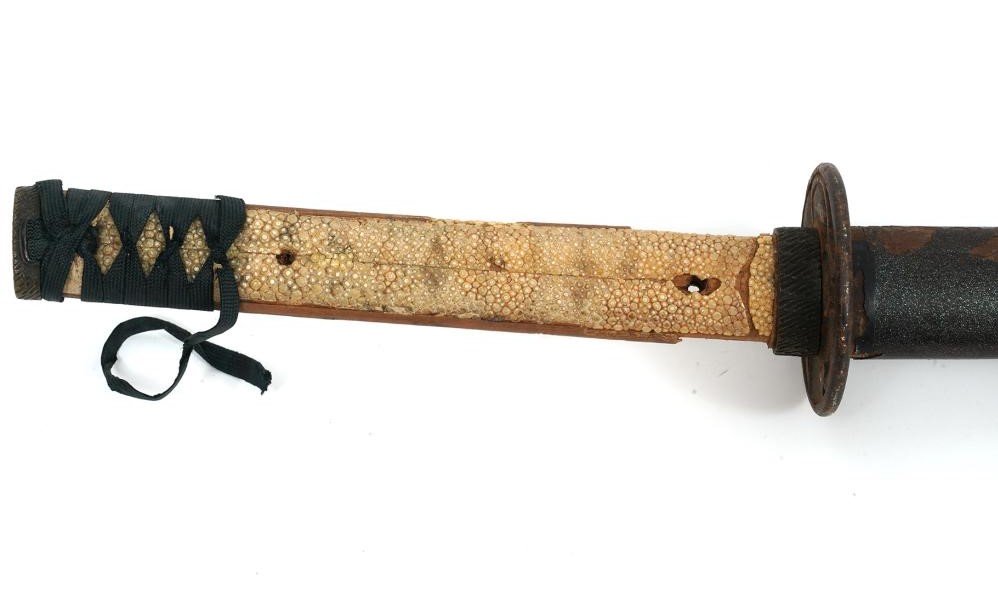
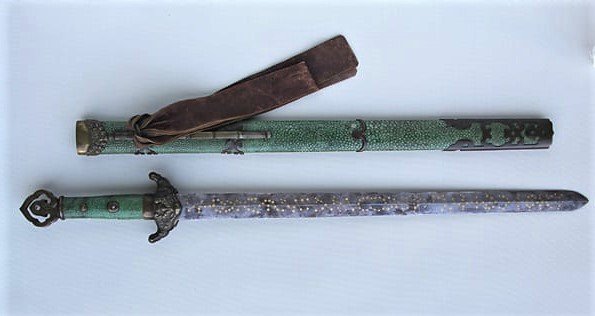
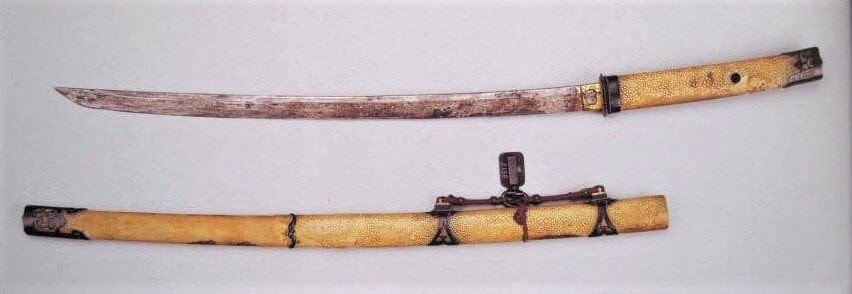
Europe, as we mentioned before began importing shagreen-covered objects during the 17th and 18th centuries, and in the mid-1700s, a tanner in Paris became the first European shagreen expert (his name, Galluchat, has been transformed into Galuchat, and now Galuchat is the French word for shagreen).
Louis XV’s most famous mistress, Madame de Pompadour, was the dominant patron of Monsieur Galluchat.
Shagreen became a popular material again in Europe during the Art Deco era, when designers sought to fuse the French tradition of luxury with exotic and precious materials. Designers like Clément Rousseau and Jean-Michael Frank used shagreen to create their most sumptuous furniture.
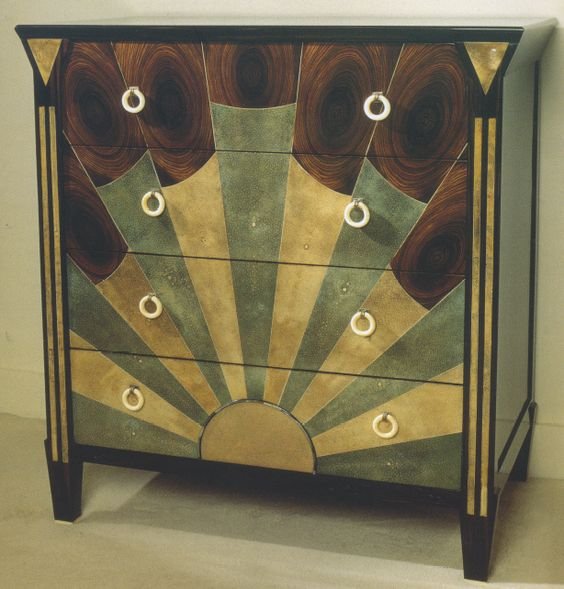
Chest of drawers in ebony of macasar sheathed in shagreen, prints and nets in ivory
There are few records of its use in Korea.
Due to its high cost, shagreen was primarily used for small pieces, and very few shagreen-covered furniture items have survived to the present day.
However, it is worth noting the presence of several workshops that specialized in this technique on the island of Ganghwa, located northwest of Seoul. While original pieces are rare, some items executed during the 20th century have endured. These pieces of furniture, typically constructed from pine or paulownia, were coated with a thick black lacquer adorned with inlays of shagreen and mother-of-pearl.
The process of creating these pieces was time-consuming and intricate. Initially, the furniture was covered with a fabric that was directly adhered to the wood. The shagreen and mother-of-pearl decoration were then affixed to this fabric, and finally, layers of lacquer were meticulously applied.
The decorative motifs often featured a dragon and a Phoenix set against a floral background.
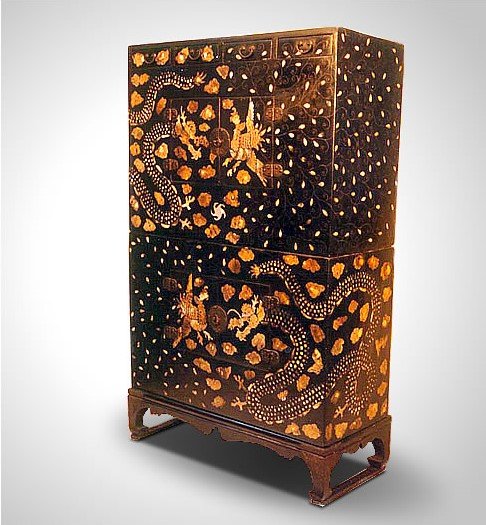
Paulownia wood covered with black lacquer inlay with shagreen and mother-of-pearl. Late 19th century. Ganghwa Island. Private collection.



H. 12cm, Diameter: 6,5cm.
Collection of the National Museum of Korea.
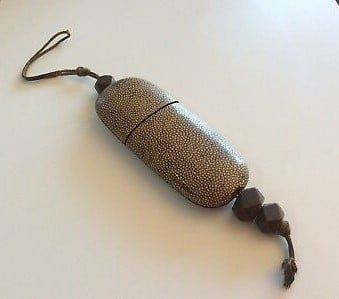


H. 12,5cm, W. 42,5cm, D. 11,5cm.
Collection of the National Museum of Korea.
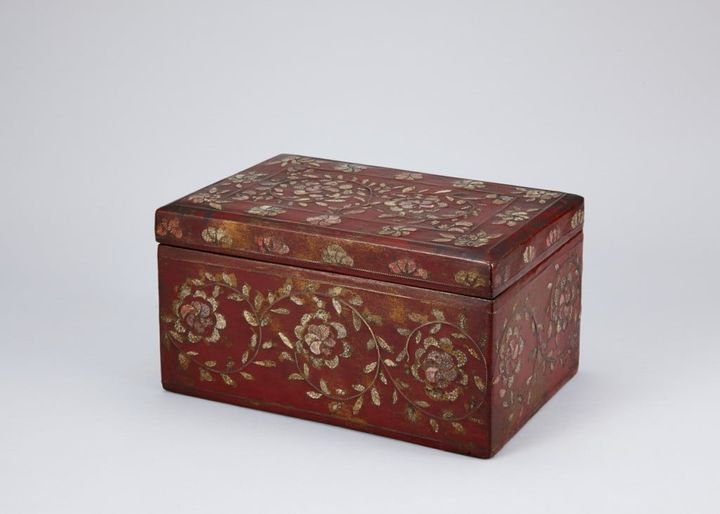
Jeoson dynasty. Late 19th early 20th century.
Collection of the Horim Museum in Seoul.
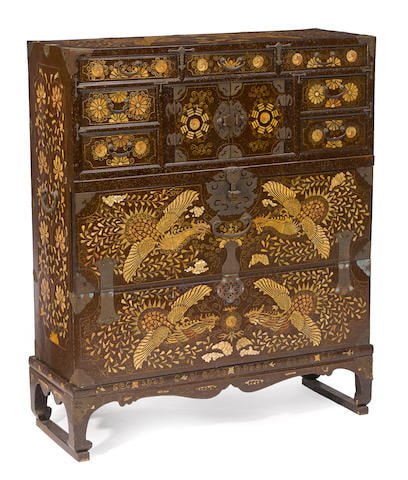
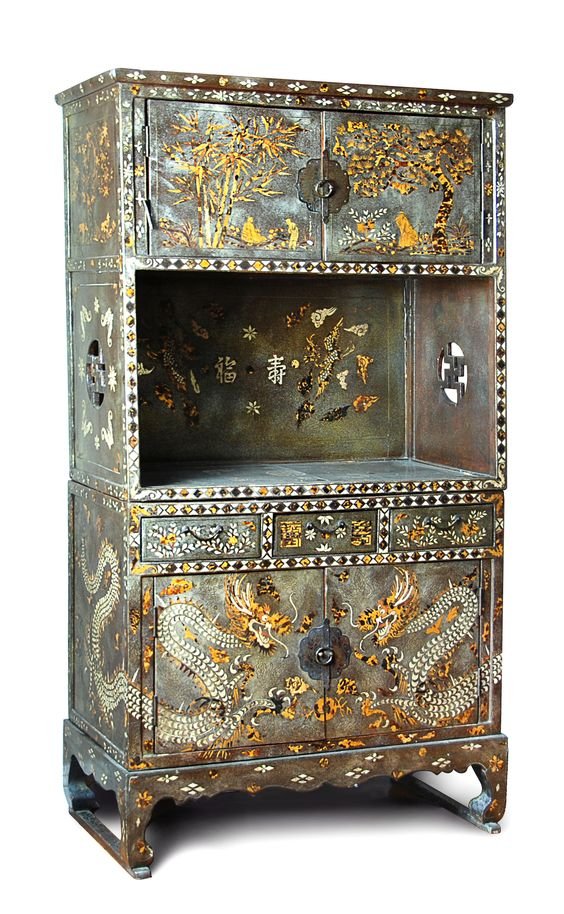
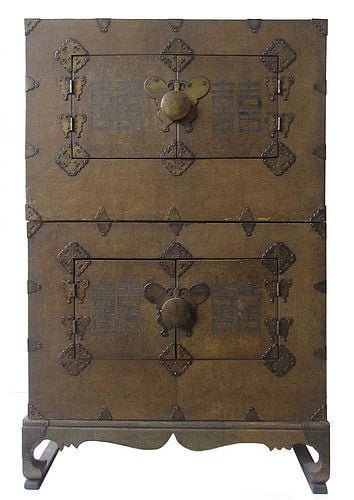
Antique shagreen stacking cabinet. Labelled 19th century.
H. 93cm, L. 61cm, D. 36cm.
Beige & green shagreen inlay signs of double happiness on the doors.
Private Collection.

19th century
Lacquered wood with brass wire and dyed ray skin inlay;
gilded metal fittings.
H. 61cm, W. 66cm, D. 43,2cm.

Top & side.
Collection Philadelphia Museum of Art. USA


Collection of the Portland Museum, USA.

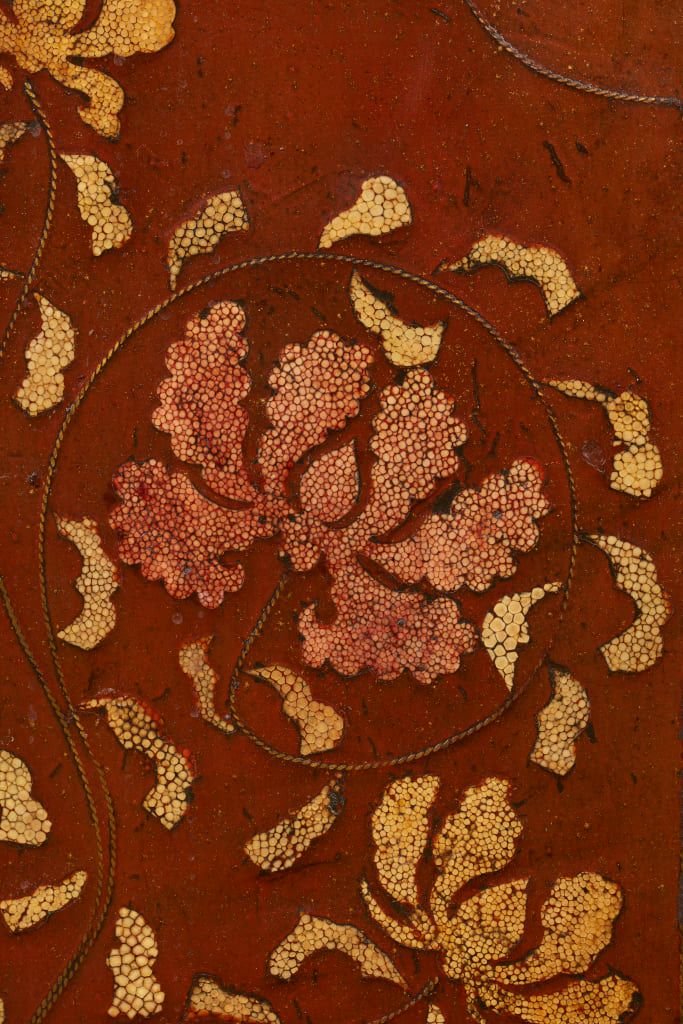

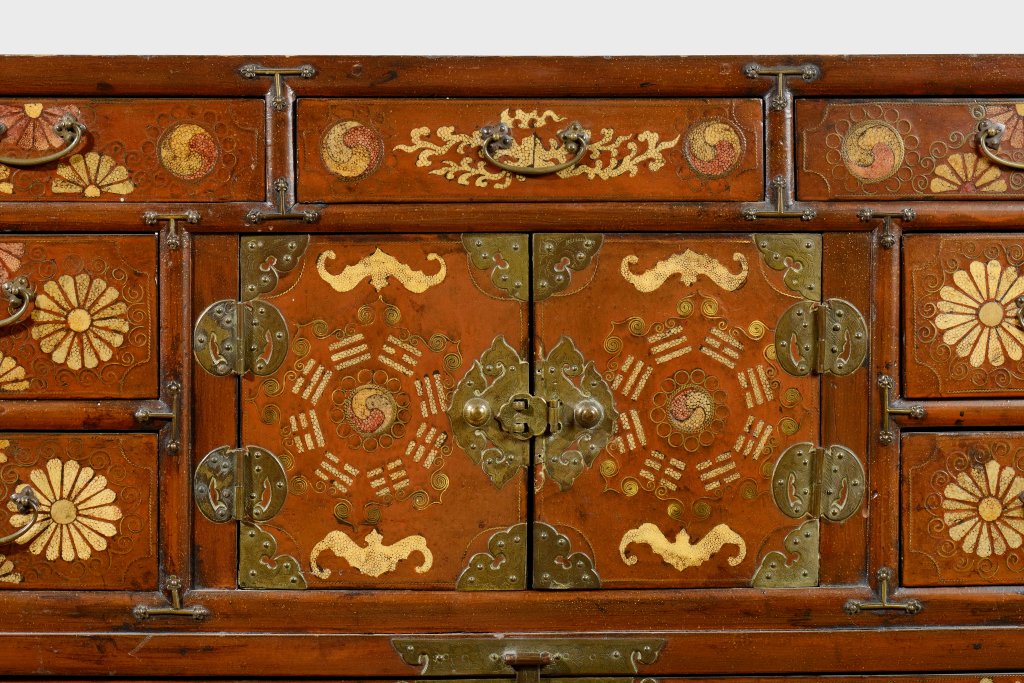
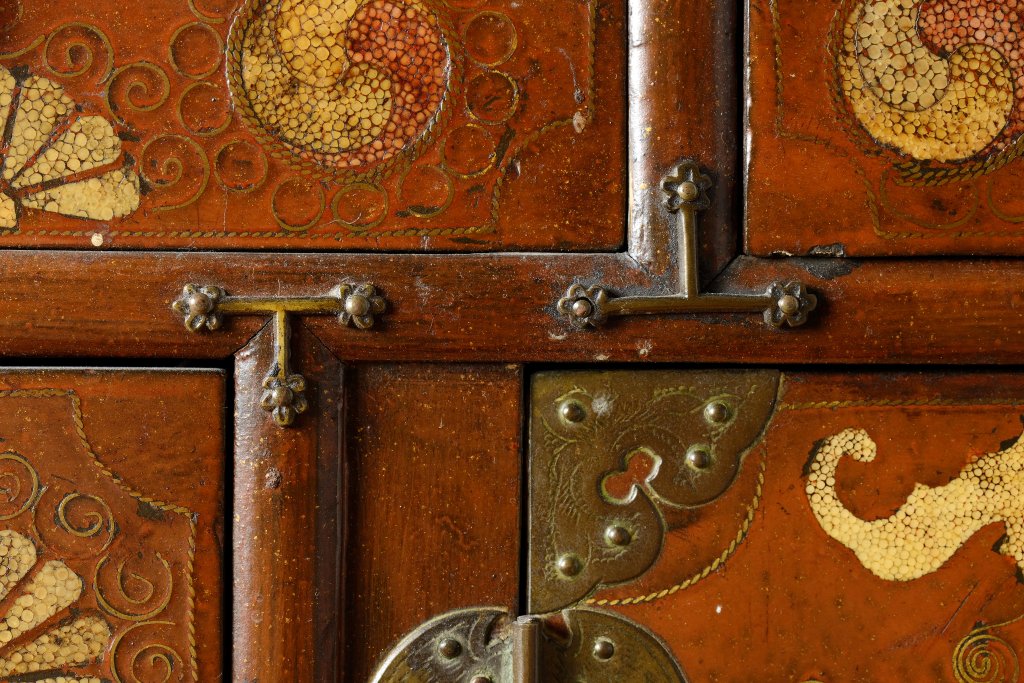
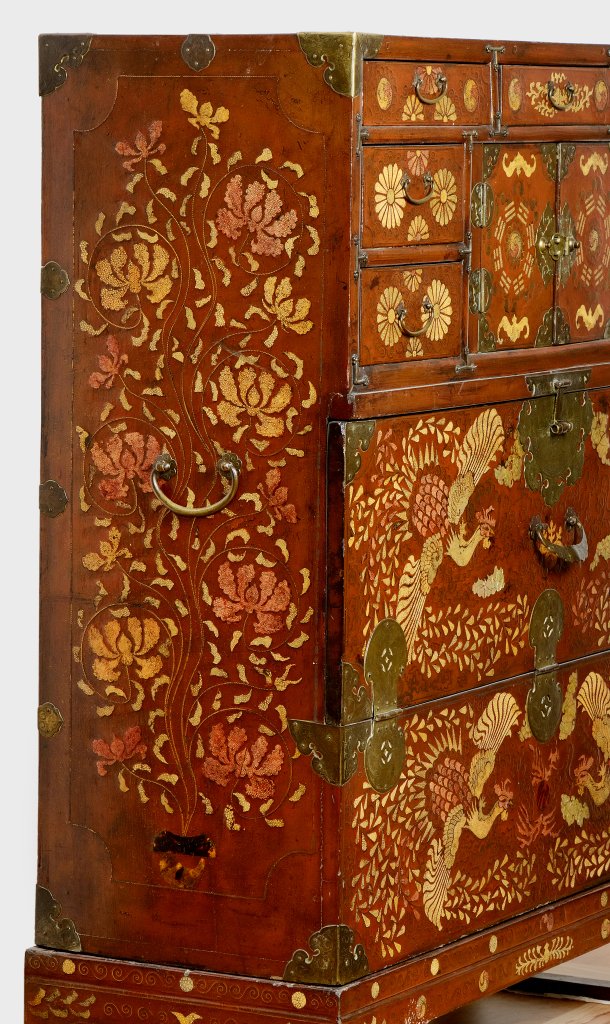

Lacquered wood with inlaid mother-of-pearl, shagreen, and metal wire.
H. 25,4 cm, Diam. 69,9 cm. Date: 1850 – 1950.
This lacquered wooden table is composed of a round top mounted on a short conical pedestal. The surface is decorated with two phoenixes, while the sides of the pedestal are pierced with four circles containing a symbol of the Korean national flag (Taegeukgi).
Collection of Asian Art Museum Chong-Moon Lee Center for Asian Art and Culture.


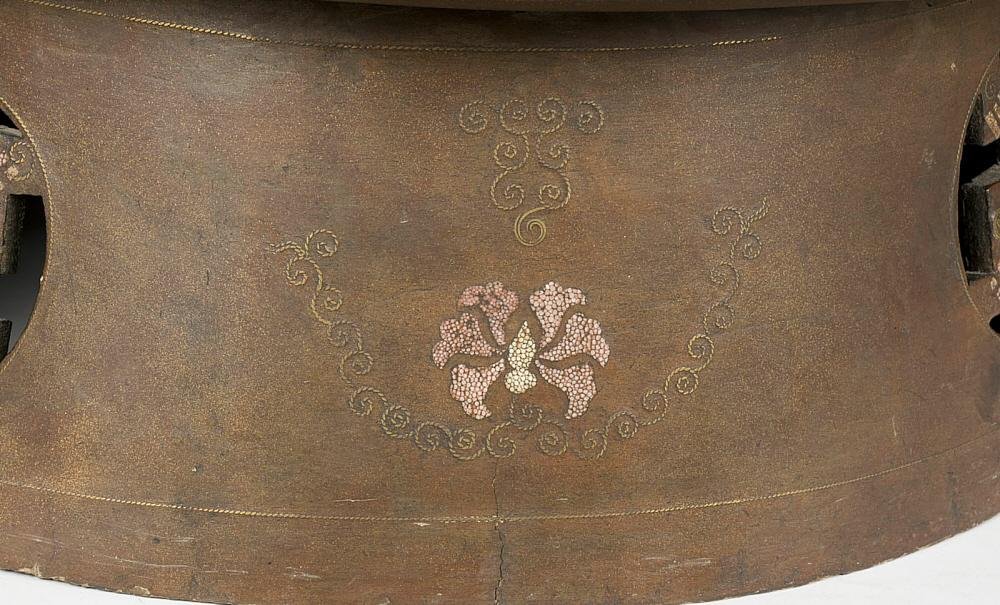

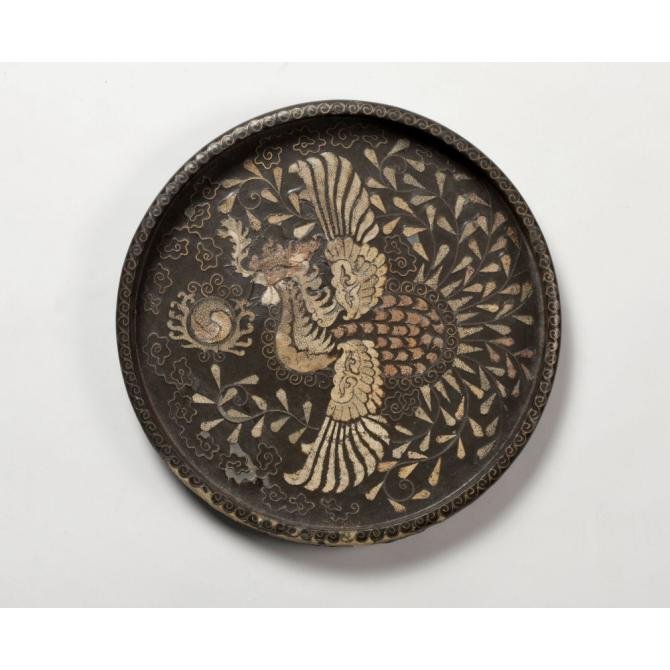
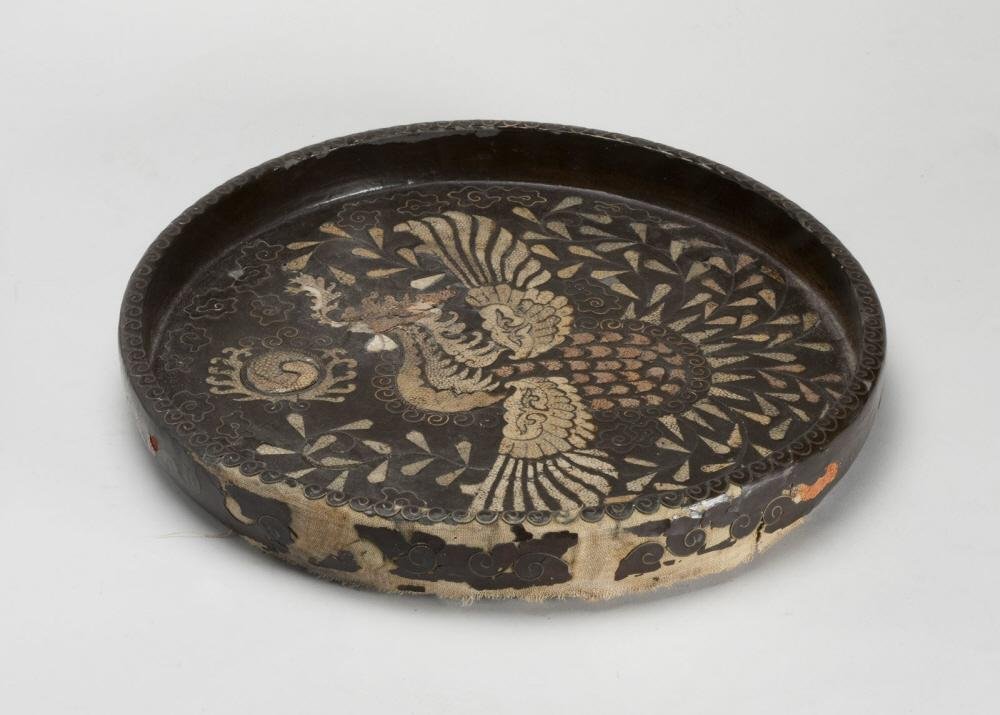
Tray with phoenix motif 봉황 무늬 쟁반 Date: 1850-1910. Lacquered wood with inlaid ray skin and brass wire. H. 43,5 cm, Diam. 34,3 cm. Collection of Asian Art Museum Chong-Moon Lee Center for Asian Art and Culture.
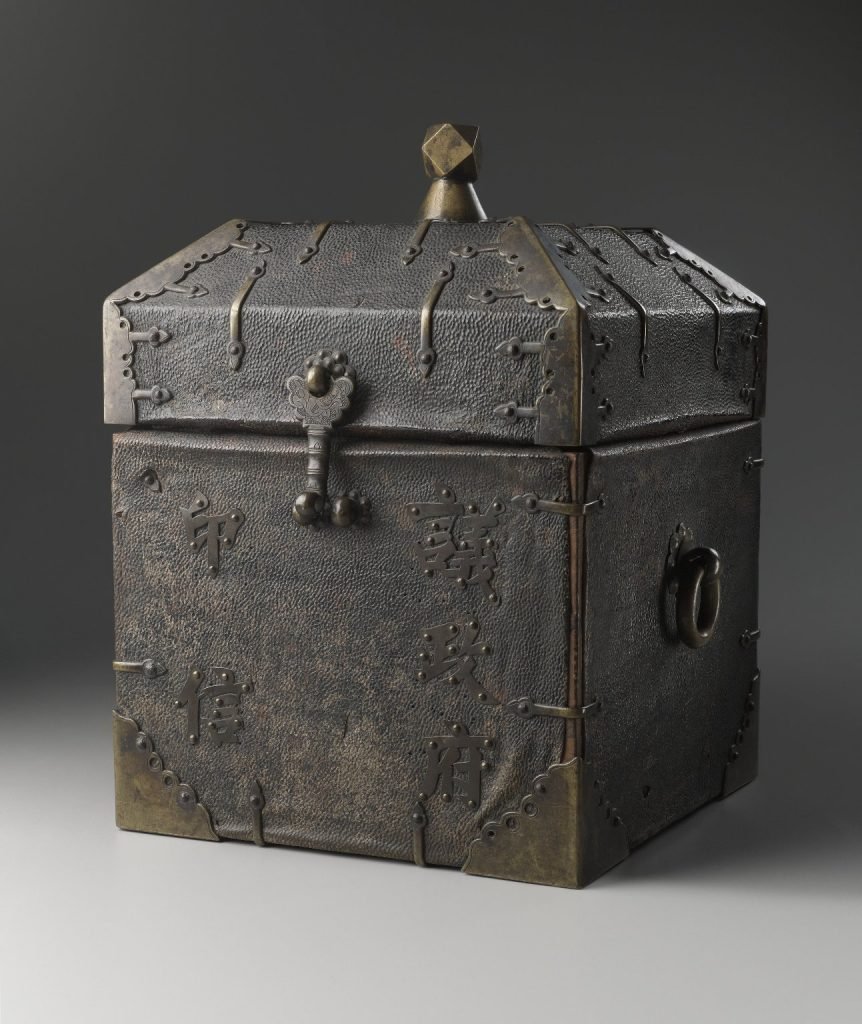
WOOD, LACQUERED SHARKSKIN, METAL FITTINGS.
Last half of 18th century
Joseon dynasty.
26.7 x 22.2 x 19.1 cm.
Collection The Brooklyn Museum.
Very large metal or jade seals were used in the Joseon period to put the stamp of approval on state documents. The seals themselves became emblems of authority, displayed at meetings and handled with great care. This is the outer storage and carrying box for a seal of the State Council, or Uijeongbu, a board of the king’s highest-ranking advisors. Nesting inside would have been a lacquered wood box that held the actual seal. This is one of the objects that the Museum’s first curator of Ethnography, Stewart Culin, acquired during his groundbreaking expedition to Korea in 1913.
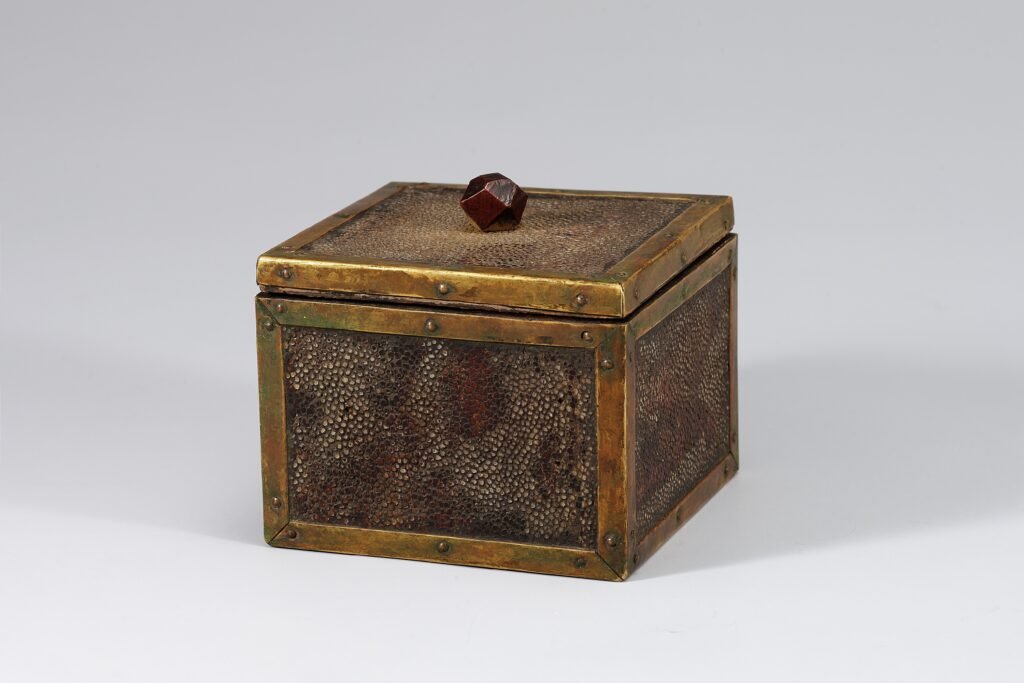

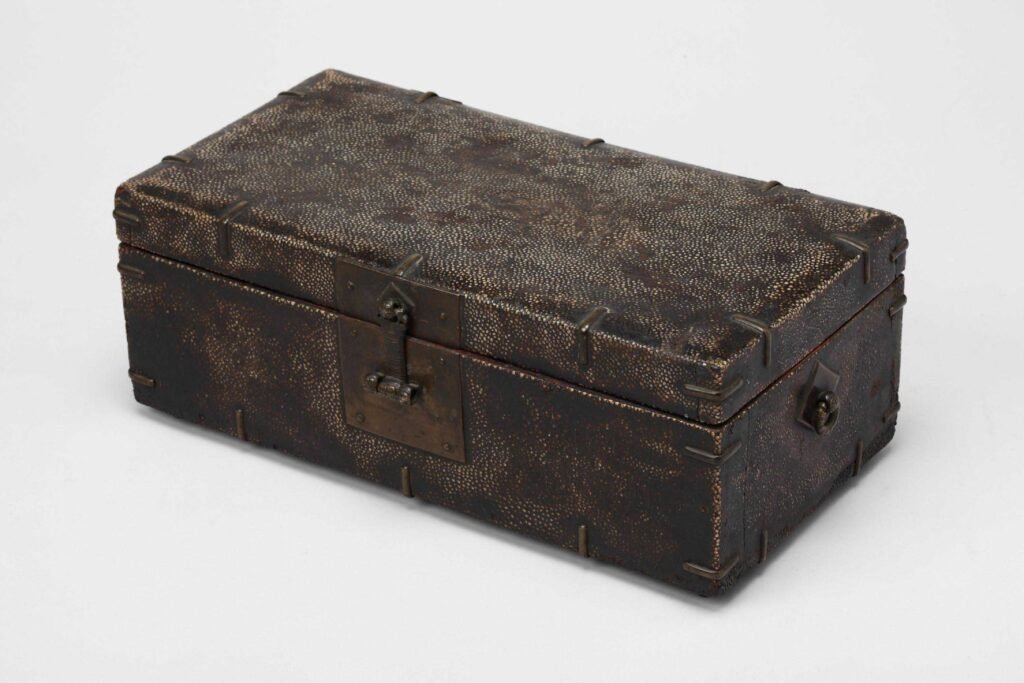
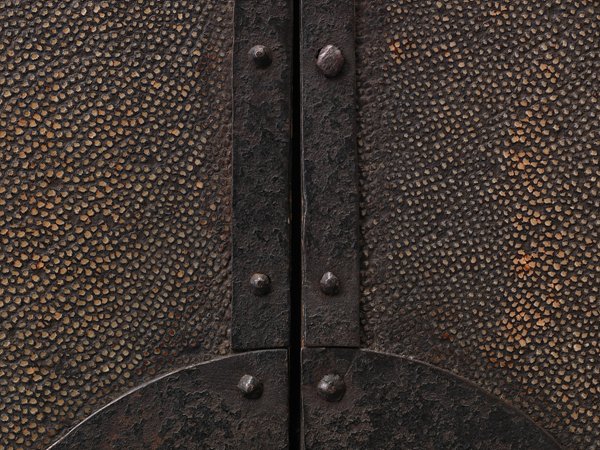
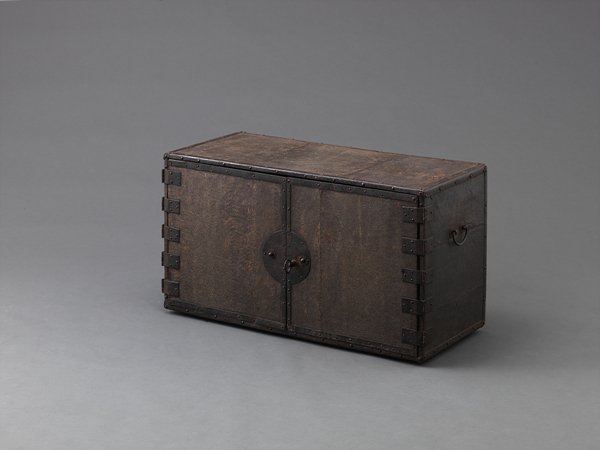
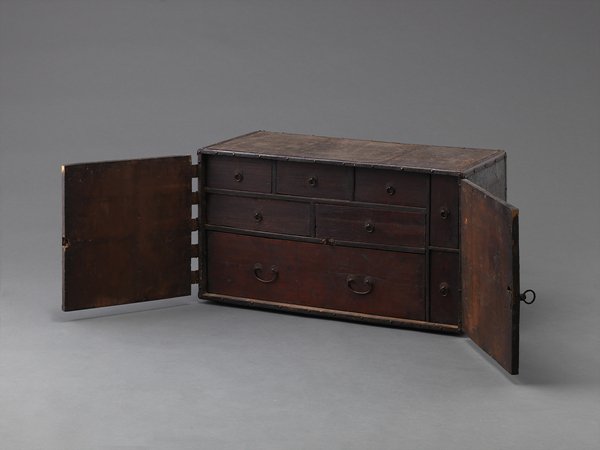

H 29,5cm, W. 57,8cm, D. 29,5cm.
A deep case connected to a shallow lid with hinges. On the opposite side of the hinges is an apparatus for padlocking, allowing the case to function as a safe for securing important documents, jewelry, money, and other valuables. The case is covered with shark skin, and a separate piece rising from the inner rim of the box supports the lid from inside.
Collection: Busan metropolitan Museum, Korea.

H. 3 5/16 in. (8.4 cm): Diam. 5 1/8 in. (13 cm.).
Collection: The Met, 1000 Fifth Avenue
New York, NY 10028.
This small box is an excellent example of ray skin decoration. Ray skin is often found on late Joseon lacquerware and furniture. Joseon artisans cleverly used ray skin, with its range of colors–off-white, yellow, orange, red, and blue–to depict various motifs. This box, likely used to hold seals, illustrates the material beauty of ray skin. The scalloped feet and detailed brass fittings offer further evidence of the box’s meticulous design and expert craftsmanship.





A box made of unvarnished paulownia wood covered with shark skin, and designed for storing seals. An internal support
piece exists for the trapezoidal lid, and strips of metal are nailed to the outer edges to make the box sturdier.
Collection: Busan metropolitan Museum, Korea.

